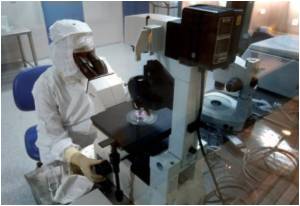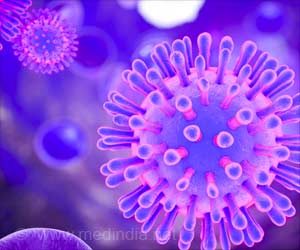
‘The addition of blinatumomab to the standard chemotherapy of patients having the high-risk form of acute lymphoblastic leukemia shows improved survival. In the next stage of the study, the drug inotuzumab ozogamicin will be evaluated.’
Read More..Tweet it Now
The study was led by the University of Texas MD Anderson Cancer Center and was presented at Annual Meeting of the American Society of Hematology. The study was led by Elias Jabbour MD professor of leukemia and was presented by Nicholas Short MD, assistant professor of leukemia.Read More..
Short said, “The best opportunity to cure any acute leukemia is by giving the most effective therapy in the front-line setting. We are very encouraged that every patient on the study achieved a complete remission and 97% achieved MRD negativity, which is highly associated with better outcomes.”
Improving treatment for ALL
For Ph-negative B-ALL, the standard treatment is combination chemotherapy. This has a high rate of complications and chances for the failure of treatment. High remission rates of about 90 percent are observed with the current therapies. However, the long-term survival rate is 50 percent or less as many patients relapse.
Therefore, it is important to find new treatment options to improve response and survival in patients.
Advertisement
According to the previous clinical trials, on using blinatumomab, there was an improvement in the overall survival in the relapsed or stubborn cancer.
Advertisement
The Clinical Trial
The trial evaluated 34 patients between the ages 14 to 59 who were newly diagnosed with Ph-negative B-ALL. The criterion for selection was that they should not have received more than one prior cycle of chemotherapy. The lab values evaluated included total bilirubin and creatinine. Performance status ≤3 was needed.
The trial included participants from different races having high-risk features like TP53 mutation in 10 patients, CRLF2+ in 6 patients, and an adverse-risk karyotype in 12 patients.
The patients were given two cycles of hyperfractionated cyclophosphamide, vincristine sulfate, doxorubicin hydrochloride, and dexamethasone (hyper-CVAD) chemotherapy alternating with two cycles of high-dose methotrexate and cytarabine. This was followed by four cycles of standard dose blinatumomab.
In the maintenance phase, 12 monthly cycle which included monthly vincristine, daily mercaptopurine, weekly methotrexate along with monthly pulses (on demand) of prednisone (POMP). Three additional cycles of blinatumomab were given.
The participants in the study experienced at least one adverse event due to the hyper-CVAD regimen. Four patients developed cytokine release syndrome (characterized by fever and multiple organ dysfunction) which was treated with corticosteroids and stopping of blinatumomab.
31 percent patients experienced blinatumomab-related neurological event like seizure, tremor, impaired balance or co-ordination, encephalopathy, and dysphasia (difficulty in communication). Other neurological events did not change the treatment plan and were manageable and reversible.
Relapse was seen in 13 percent patients but relapse was not seen in patients without baseline high-risk features or in patients beyond two years. 17 patients were in continuous remission and twelve patients underwent stem cell transplant.
In the next stage of this study, inotuzumab ozogamicin will be added to the therapy for the next 40 patients. CD22 is expressed in B cells and it delivers toxin directly to the ALL cells. Inotuzumab ozogamicin attaches to the CD22 and is an anti-CD22 antibody drug.
Data suggest that blinatumomab improves treatment response for Ph-negative B-ALL patients.
Short said, “Our goal now is to see if we can do hyper-CVAD with blinatumomab and adding inotuzumab ozogamicin to get even better results. We believe this will decrease chemotherapy-related toxicity, minimize MRD, further decrease reliance on stem cell transplants and improve long-term outcomes for these patients.”
Source-Medindia













